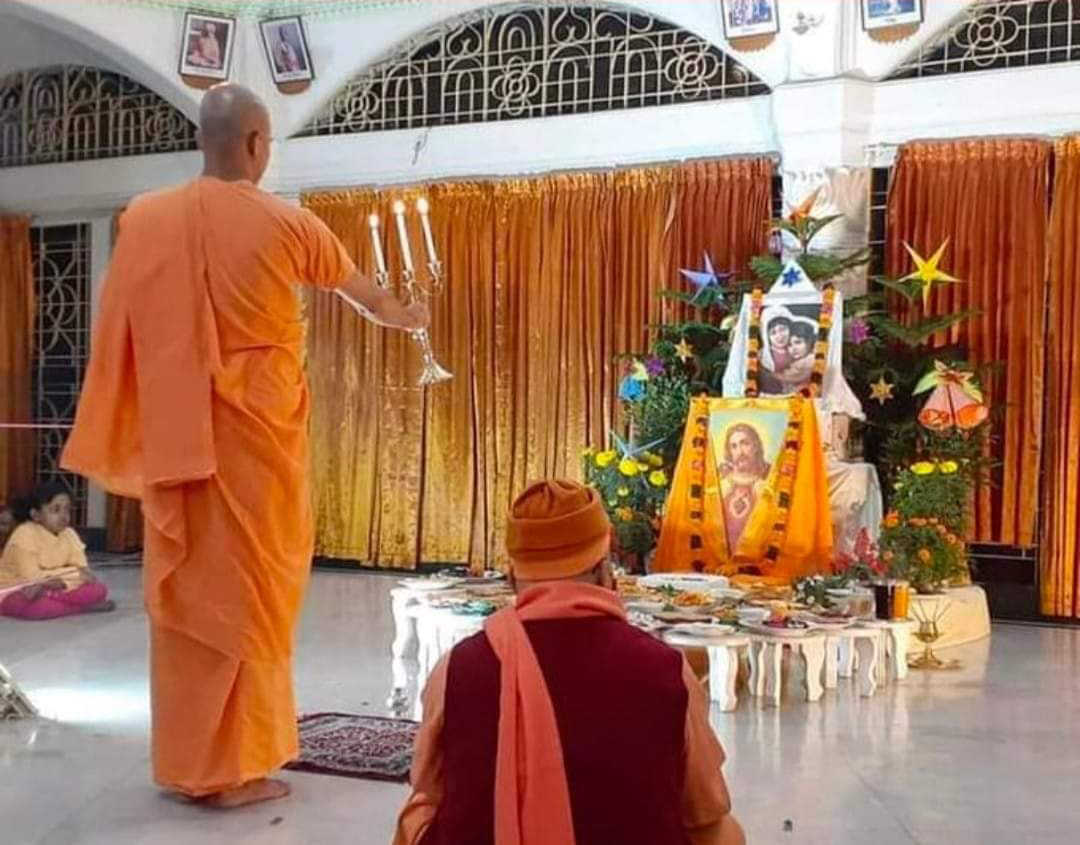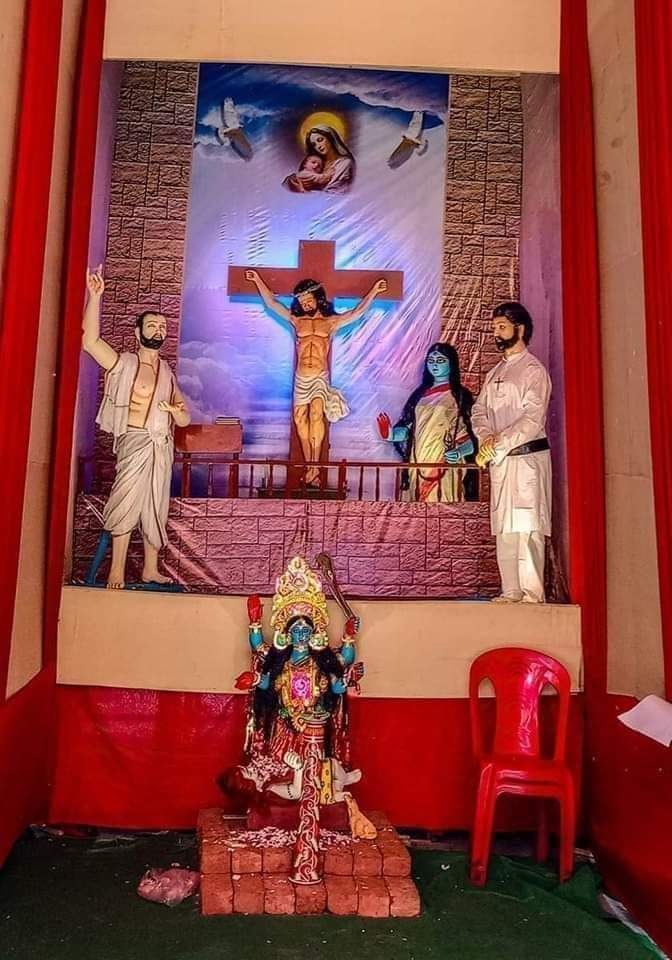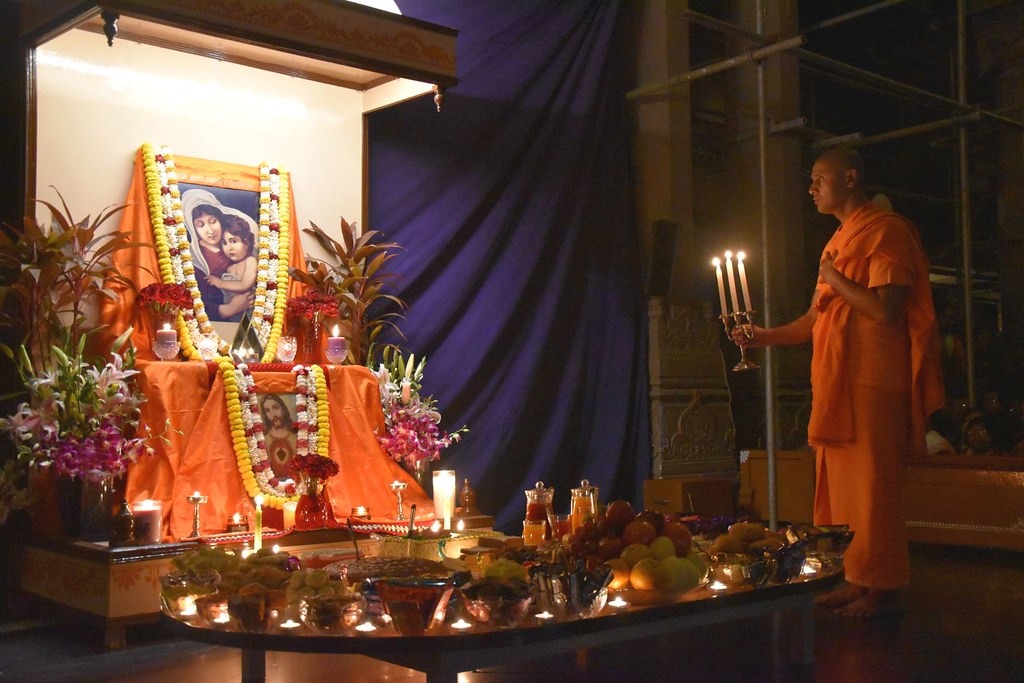Jesus Christ from the perspective of the Sanatana Dharma Religion
By Swami Yogananda
Hinduism, unlike many religious traditions with exclusive principles, is a religion characterized by openness, plurality, and flexibility in its understanding of the divine. This quality allows Hindus to venerate Jesus Christ as the Avatar or God incarnate without renouncing their spiritual identity or contradicting the fundamental principles of their religion. For Western mindsets accustomed to conceiving religions as mutually exclusive systems, it is essential to understand the philosophical and cultural foundations that make this conflict-free integration possible in the Sanatana Dharma religion.
In Hinduism, the divine is conceived as the ultimate universal reality called Brahman, which is eternal, transcendent, and impersonal, yet also manifests in personal forms to facilitate spiritual connection. Jesus Christ, with his message of love, compassion, and sacrifice, integrates seamlessly into this perspective as a divine incarnation, descending into the world for a sacred purpose.
Avatars, particularly significant in traditions such as Vaishnavism, are incarnations of God in human form who descend to restore dharma and guide humanity during specific historical moments. Jesus Christ can be understood as an avatar who appeared in a specific cultural context, delivering a message deeply resonant with the values of Hindu dharma. His emphasis on universal love, forgiveness, and devotion aligns with the central spiritual principles of Hinduism.
Hinduism maintains that there are multiple paths to the divine, an idea encapsulated in the Vedic affirmation Ekam sat vipra bahudha vadanti, which translates as “Truth is one, but the wise call it by many names.” This perspective does not view Christianity and Judaism as an opposing or incompatible system but rather as one of the many legitimate paths to spiritual realization. Within this framework, Jesus Christ is seen as enlightened master, savior, and mediator toward divine experience. His veneration does not entail the rejection of other forms of Hindu devotion but complements and enriches spiritual practice.
Similarly, Mary, the mother of Jesus, is easily identified with maternal figures such as Lakshmi, the goddess of abundance and grace, or Parvati, a spiritual protector and guide. These symbolic correspondences allow Jesus and Mary to be venerated within the Hindu devotional framework without necessitating the adoption of Christian or Jewish theology.
Throughout history, Hinduism has demonstrated a remarkable capacity for syncretism, integrating elements from other religious traditions. In regions such as Kerala, where Christianity arrived in the early centuries of the Common Era, communities simultaneously venerate Christian saints and Hindu figures. Contemporary spiritual movements, such as those of Shri Ramakrishna or Paramahansa Yogananda, have included Jesus in their universalist vision, presenting him as an avatar or enlightened master accessible to all spiritual seekers. This approach reflects Hinduism’s ability to incorporate diverse manifestations of the divine without internal conflict.
In meditative and yogic practices, Jesus Christ is often integrated as an object of contemplation. For example, Paramahansa Yogananda promoted meditation on Jesus alongside Krishna, showing how both figures represent complementary aspects of the same divine truth. In this context, Jesus is not perceived merely as a historical figure but as a living spiritual presence that guides the practitioner toward enlightenment and transcendence.
For a Hindu, venerating Jesus Christ as an avatar or enlightened master does not contradict the fundamental tenets of their religion. On the contrary, it enriches their spiritual path by adding another dimension of connection to the divine. Hinduism, with its pluralistic approach and acceptance of spiritual diversity, recognizes the freedom of each individual to choose a path to the transcendent that resonates with their heart. Worshiping Jesus is simply another expression of the universal quest for the divine, framed within the inclusive and profound understanding that characterizes Hinduism.
This capacity for integration is not a weakness but one of the greatest strengths of this tradition, reflecting a vision of unity underlying spiritual diversity and reaffirming that the divine manifests in many forms to guide all beings toward the realization of the ultimate Truth.

Ramakrishna Mission, India

Shivananda Ashram, Rishikesh, India

Ramakrishna Mission, Kolkata, India

Ramakrishna Mission, India



